In the dynamic realm of logistics and transportation, the efficiency of your fleet significantly hinges on the precision of equipment specifications. Among the critical components, the tipper body plays a pivotal role in ensuring seamless operations. At CarMax Vehicle, we understand the intricacies involved in calculating the tipper body for semi-trailers, and we’re here to guide you through a meticulous, step-by-step process that ensures optimal performance and safety.
Understanding the Tipper Body: An Overview
Before diving into the calculations, it’s essential to grasp the fundamental aspects of a tipper body. A tipper body, also known as a dump body, is a specialized container mounted on the chassis of semi-trailers, designed to transport and unload bulk materials efficiently. The primary functions include:
- Loading Efficiency: Facilitates quick loading of materials.
- Unloading Mechanism: Allows for rapid unloading through hydraulic lifting and tipping.
- Material Containment: Ensures secure transportation of various substances without spillage.
Key Factors Influencing Tipper Body Calculations
Calculating the tipper body involves considering multiple variables that collectively determine its functionality and durability. Here’s a breakdown of the crucial elements:
| Factor | Description |
|---|---|
| Material Type | Different materials (e.g., gravel, sand, construction debris) have varying densities and handling requirements. |
| Load Capacity | The maximum weight the tipper body can safely carry, influenced by structural strength and suspension system. |
| Dimensions | Length, width, and height of the tipper body must align with regulatory standards and operational needs. |
| Unloading Mechanism | The type and efficiency of the hydraulic system used for tipping, affecting speed and control during unloading. |
| Chassis Compatibility | Ensuring the tipper body is compatible with the semi-trailer’s chassis in terms of weight distribution and attachment points. |
| Regulatory Compliance | Adhering to regional and national transportation regulations regarding dimensions, weight, and safety standards. |
| Material Strength and Durability | The robustness of materials used in the tipper body construction to withstand wear and tear from constant loading and unloading cycles. |
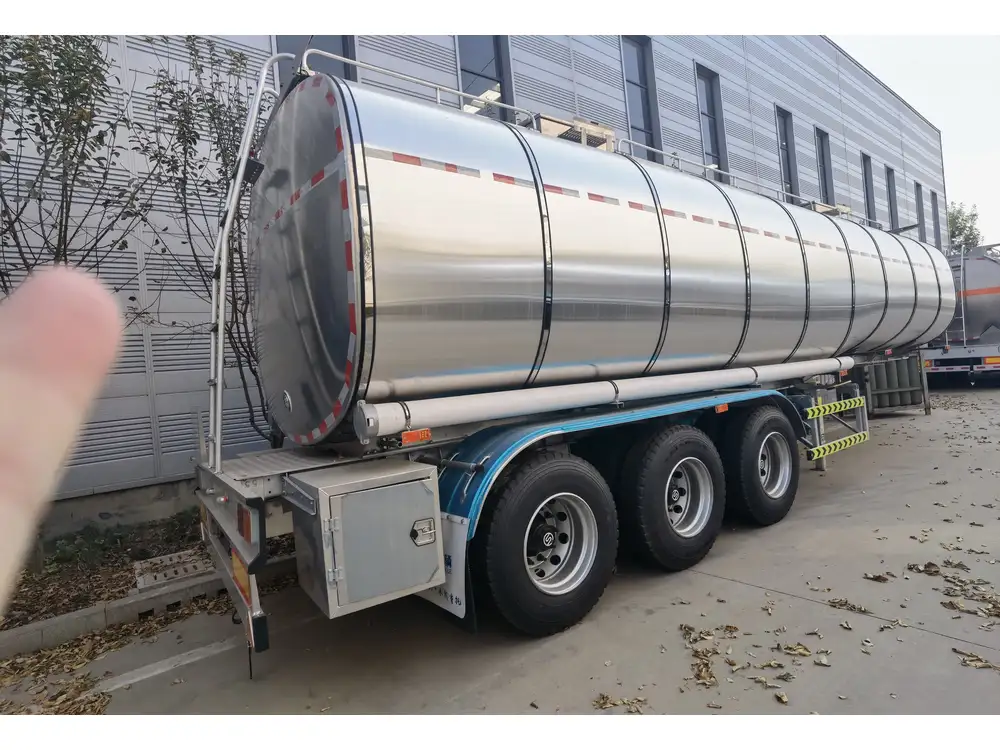
Step-by-Step Guide to Calculating the Tipper Body
1. Determine the Load Requirements
Begin by assessing the types of materials you’ll be transporting. Different materials have distinct weights and handling characteristics, which directly influence the load capacity and structural requirements of the tipper body.
- Material Density: Understand the density (kg/m³) of the materials to calculate the volume capacity needed.
- Frequency of Use: Higher frequency operations may necessitate more durable materials and robust designs.
2. Calculate the Load Capacity
The load capacity is a critical parameter ensuring safety and efficiency. Here’s how to calculate it:
Load Capacity (kg) = Gross Vehicle Weight Rating (GVWR) – Tare Weight of the Semi-Trailer – Driver Weight – Cargo Weight (other than tipper body)
Example Calculation:
- GVWR: 40,000 kg
- Tare Weight of Semi-Trailer: 18,000 kg
- Driver Weight: 100 kg
- Cargo Weight (excluding tipper body): 2,000 kg
Load Capacity = 40,000 – 18,000 – 100 – 2,000 = 19,900 kg
Ensure that the calculated load capacity accommodates the maximum expected load with a safety margin.

3. Define the Tipper Body Dimensions
The dimensions must align with both operational needs and regulatory standards. Consider the following:
- Length: Depends on the volume of material to be transported.
- Width: Must accommodate the width of materials while ensuring stability.
- Height: Influences the tipping angle and unloading efficiency.
Refer to local transportation regulations to ensure compliance with size restrictions.
4. Assess the Unloading Mechanism
A reliable unloading system is paramount. Evaluate the hydraulic lifting system based on:
- Lifting Capacity: Must handle the maximum load capacity.
- Speed: Determines how quickly materials can be unloaded.
- Control Systems: Precision in tipping angle and stability during unloading.
5. Ensure Chassis Compatibility
The chassis must support the tipper body seamlessly. Key considerations include:
- Attachment Points: Secure and distribute weight evenly.
- Suspension System: Adequate for the total weight, ensuring smooth operation.
- Braking System: Enhanced braking capacity may be required for heavier loads.

6. Incorporate Material Strength and Durability
Select materials that can withstand the operational demands:
- Steel Grades: Opt for high-strength steel to ensure longevity.
- Reinforcements: Structural reinforcements in high-stress areas enhance durability.
- Surface Treatments: Corrosion-resistant coatings prolong the lifespan.
Advanced Calculations: Volume and Weight Distribution
Accurate volume and weight distribution calculations are essential for optimizing performance and safety.
Volume Calculation
Volume (m³) = Length (m) × Width (m) × Height (m)
Example:
- Length: 2.5 m
- Width: 2.2 m
- Height: 1.8 m
Volume = 2.5 × 2.2 × 1.8 = 9.9 m³

Weight Distribution
Proper weight distribution prevents undue strain on the chassis and suspension.
- Front Axle Load: Should not exceed manufacturer specifications.
- Rear Axle Load: High to ensure traction and stability.
- Center of Gravity: Maintain a low center of gravity to enhance stability during tipping and transportation.
Regulatory Compliance: Navigating the Legal Landscape
Compliance with transportation regulations safeguards against legal repercussions and ensures operational legitimacy.
Key Regulations to Consider
- Maximum Weight Limits: Vary by region; ensure adherence to avoid fines.
- Dimension Restrictions: Width, height, and length must conform to local laws.
- Safety Standards: Equip tipper bodies with necessary safety features like stabilizers and warning signs.
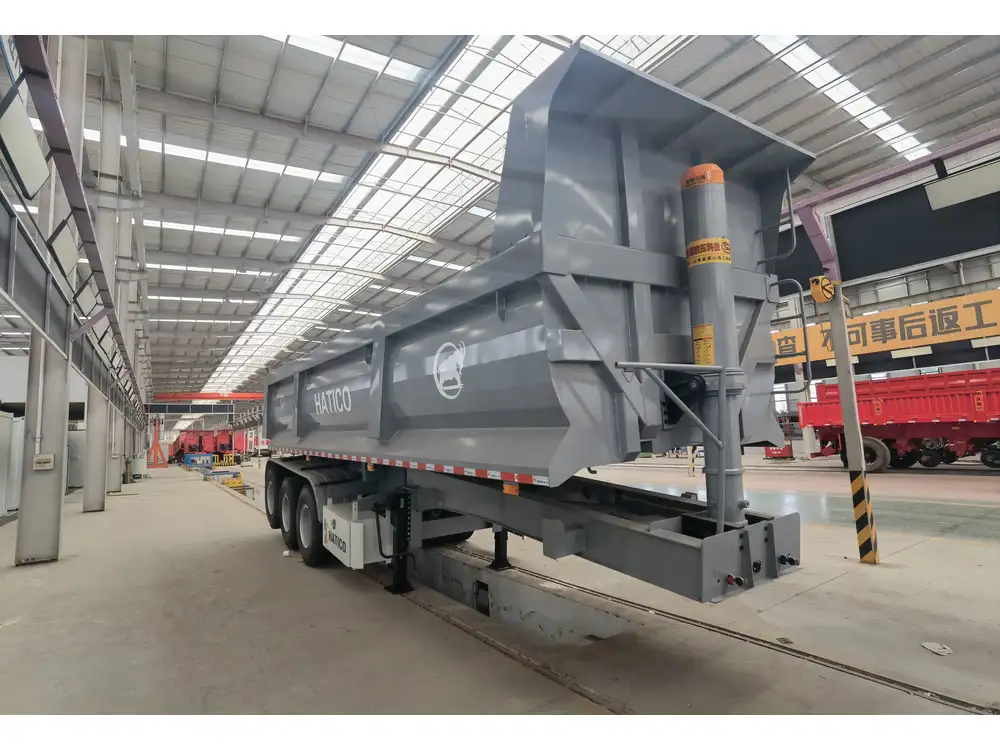
Certification and Inspection
Regular inspections and obtaining necessary certifications affirm compliance and reliability.
Optimizing Tipper Body Design for Efficiency
An optimized design enhances performance, safety, and longevity.
Material Selection
Choosing the right materials impacts durability and maintenance:
- High-Strength Steel: Offers superior strength-to-weight ratio.
- Aluminum Alloys: Lighter weight, reducing overall trailer mass.
- Composite Materials: Potential for reduced maintenance and increased lifespan.
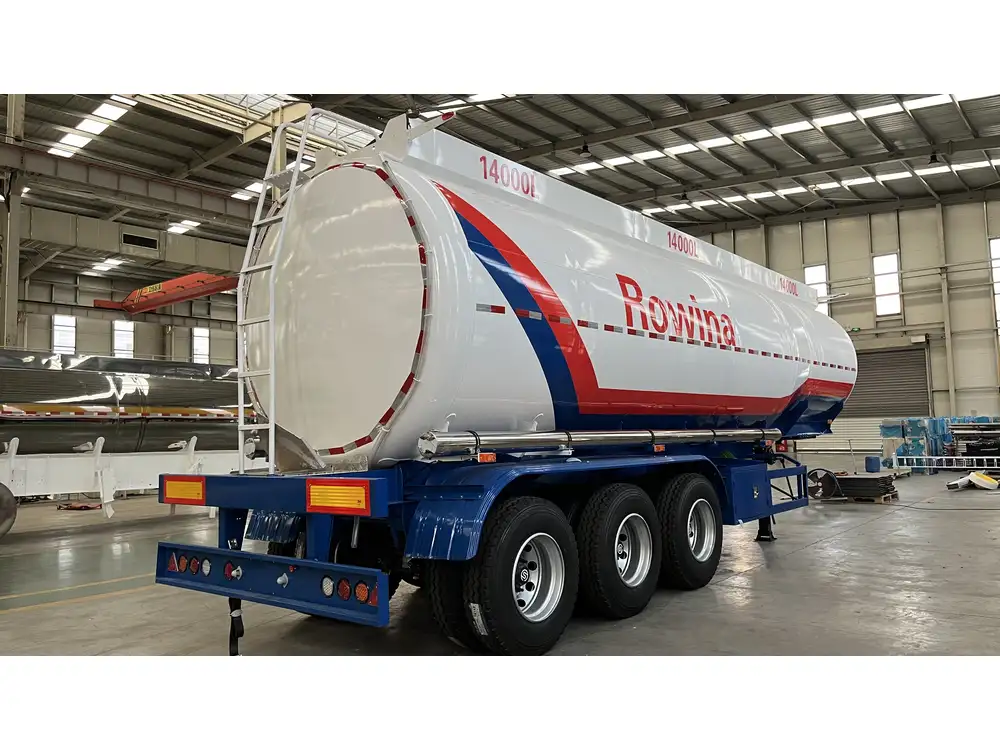
Aerodynamic Considerations
Streamlining the tipper body reduces fuel consumption and wear:
- Smooth Surfaces: Minimize air resistance.
- Integrated Components: Reduce protrusions that disrupt airflow.
Modular Design Features
Incorporating modularity allows for adaptability and ease of maintenance:
- Interchangeable Parts: Simplify repairs and upgrades.
- Adjustable Components: Facilitate handling different materials or load sizes.
Technological Integration: Enhancing Functionality
Modern technologies can significantly improve tipper body operations.
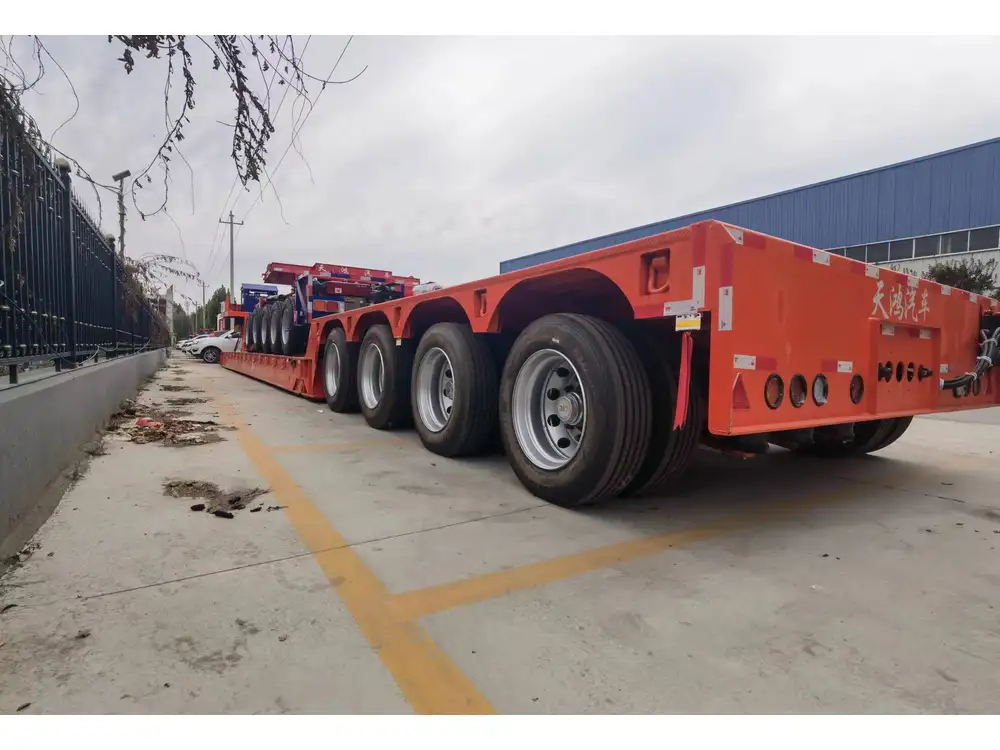
Hydraulic Systems
Advanced hydraulic systems offer precise control and efficiency:
- Electronic Controls: Enable accurate tipping angles and speeds.
- Energy-Efficient Motors: Reduce power consumption during operation.
Telematics and IoT
Integrating telematics enhances monitoring and management:
- Real-Time Tracking: Monitor load status and location.
- Predictive Maintenance: Identify potential issues before they escalate.
Automation and Smart Features
Automation streamlines operations and reduces human error:
- Automated Tipping: Enhances speed and accuracy during unloading.
- Smart Sensors: Monitor load balance and structural integrity.
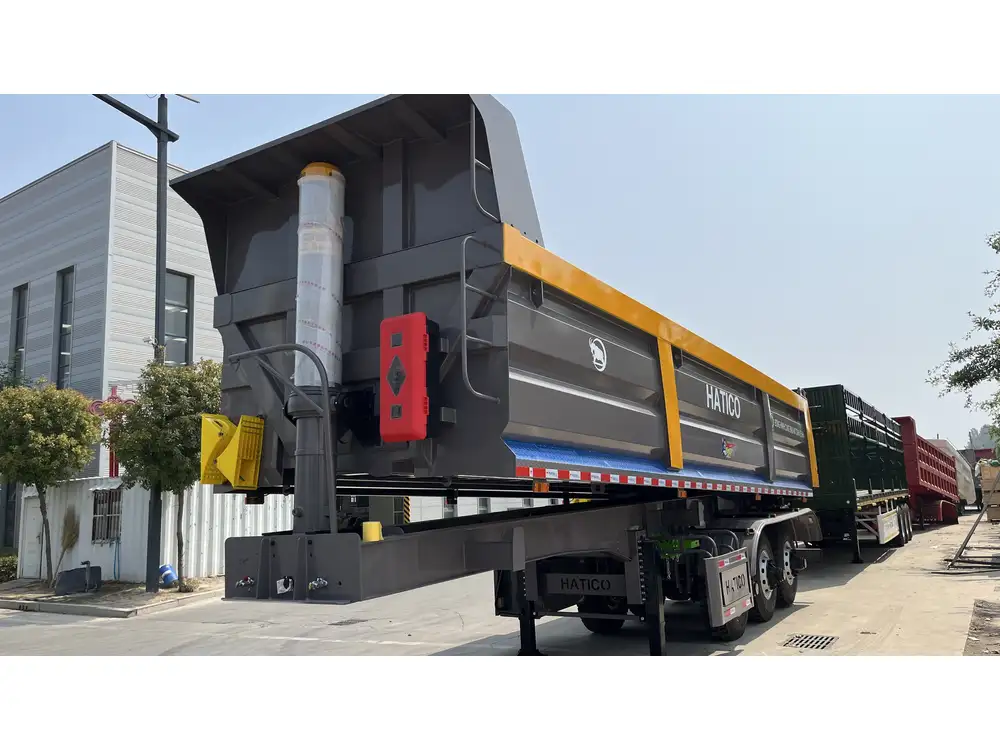
Maintenance Best Practices for Longevity
Regular maintenance ensures the tipper body remains in optimal condition.
Routine Inspections
Conduct inspections to identify wear and tear:
- Structural Integrity: Check for cracks or deformities.
- Hydraulic Systems: Ensure there are no leaks or malfunctions.
- Surface Condition: Maintain coatings to prevent corrosion.
Scheduled Maintenance Tasks
Implement a maintenance schedule addressing key components:
| Task | Frequency | Details |
|---|---|---|
| Hydraulic Fluid Check | Weekly | Inspect fluid levels and replace as necessary. |
| Structural Inspection | Monthly | Examine for any signs of damage or wear. |
| Cleaning and Coating | After Each Use | Remove debris and reapply protective coatings to maintain surface integrity. |
| Mechanical Components | Bi-Monthly | Lubricate joints and moving parts to ensure smooth operation. |
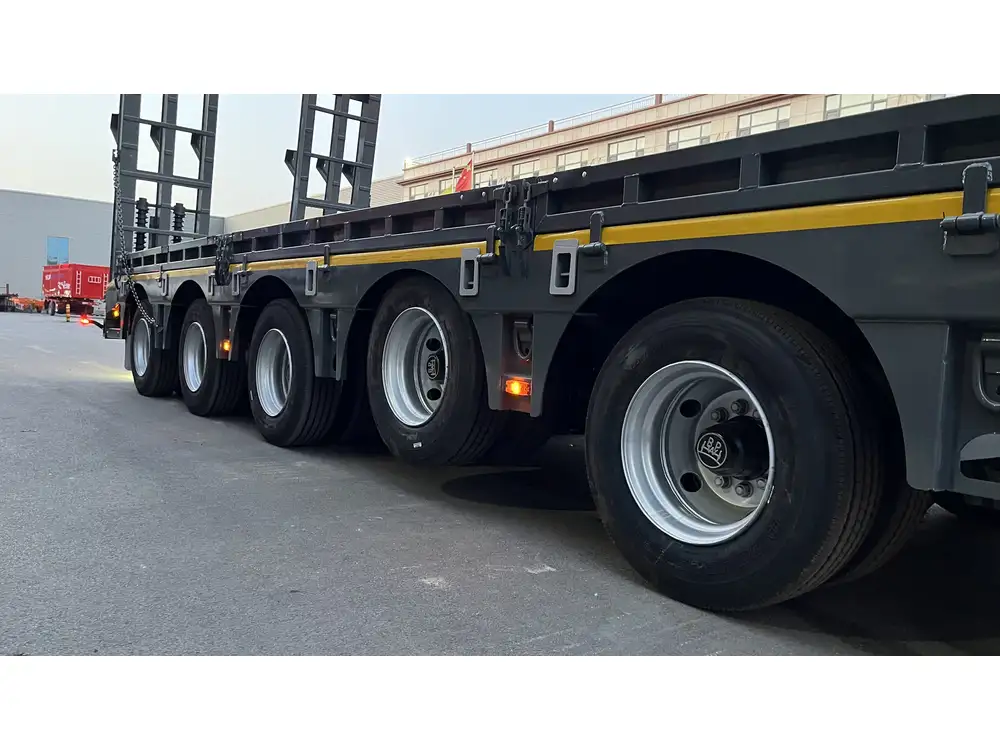
Addressing Wear and Tear
Proactive handling of deterioration prevents major issues:
- Component Replacement: Replace worn parts promptly to avoid system failures.
- Surface Repairs: Address scratches and dents to prevent corrosion.
Cost-Benefit Analysis: Investing in Quality Tipper Bodies
Evaluating the cost against the benefits ensures a sound investment.
| Aspect | Initial Cost | Long-Term Benefits |
|---|---|---|
| High-Quality Materials | Higher upfront | Increased durability and reduced maintenance costs over time. |
| Advanced Hydraulic Systems | Moderate | Enhanced efficiency and operational speed, leading to productivity gains. |
| Technological Integration | Variable | Improved monitoring and maintenance, reducing downtime and operational costs. |
| Customized Design Features | Higher upfront | Tailored to specific operational needs, enhancing overall performance. |
Return on Investment (ROI)
Calculate ROI by comparing the savings from reduced maintenance, increased efficiency, and extended equipment lifespan against the initial investment.
Example:
- Initial Investment: $50,000
- Annual Savings (Maintenance + Efficiency): $15,000
- ROI Period: Approximately 3.3 years
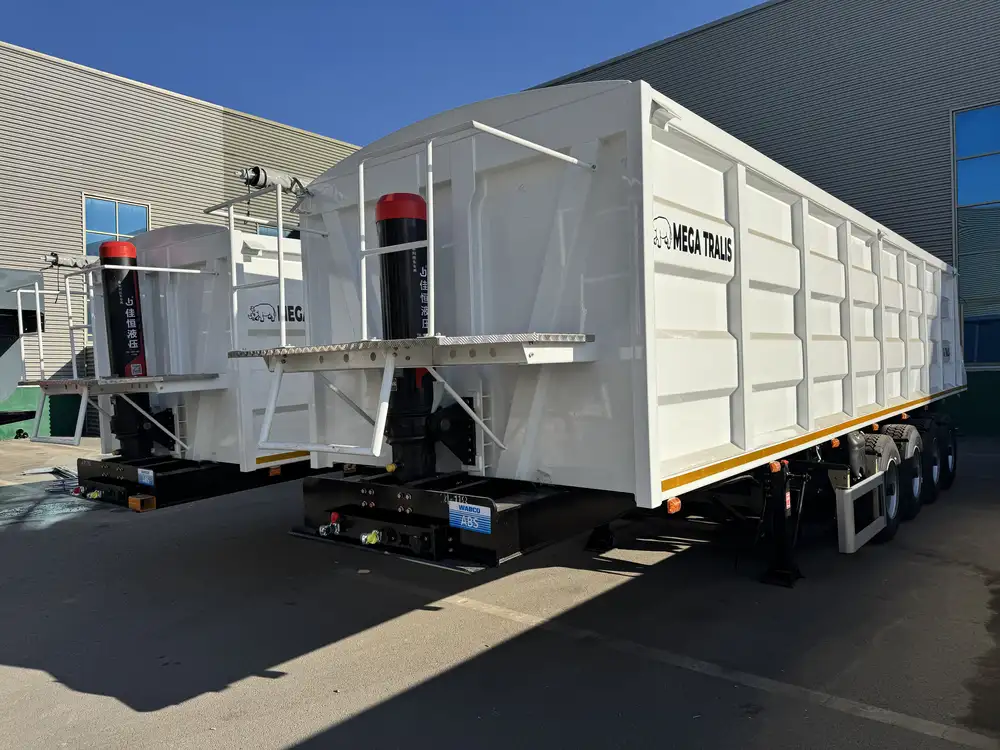
CarMax Vehicle: Your Partner in Precision Engineering
At CarMax Vehicle, we specialize in crafting tipper bodies that embody precision, durability, and efficiency. Our expert team leverages advanced engineering techniques and high-quality materials to deliver products that meet and exceed industry standards. Whether you’re transporting construction materials, aggregates, or other bulk substances, our tipper bodies are designed to optimize your operations and enhance safety.
Why Choose CarMax Vehicle?
- Expertise: Decades of experience in heavy machinery manufacturing.
- Customization: Tailored solutions to meet specific operational requirements.
- Innovation: Incorporation of the latest technologies for enhanced functionality.
- Quality Assurance: Rigorous testing and quality control measures ensure reliability.
Practical Applications: Real-World Scenarios
Understanding theoretical calculations is pivotal, but applying them in real-world scenarios ensures practical efficacy.
Scenario 1: Construction Site Logistics
A construction company requires a tipper body to transport gravel and sand. By calculating the load capacity based on material density and expected volume, CarMax Vehicle designs a tipper body with the appropriate dimensions and hydraulic system to facilitate efficient unloading, reducing site downtime.
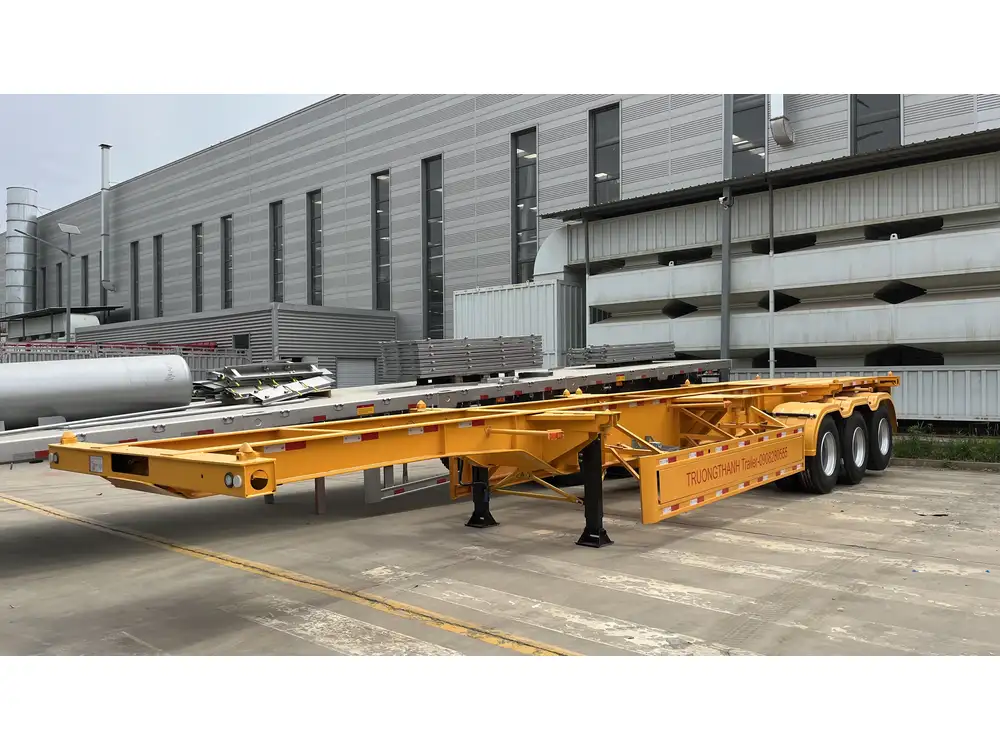
Scenario 2: Agricultural Supply Chain
In agriculture, timely transportation of fertilizers and soil is crucial. Our customized tipper bodies accommodate various load types, ensuring that agricultural products are delivered promptly and safely, enhancing supply chain reliability.
Scenario 3: Recycling Operations
Recycling facilities handle diverse materials, necessitating versatile tipper bodies. Our designs incorporate modular features and robust structures to handle different types of recyclable materials, promoting operational flexibility and sustainability.
Enhancing Safety: Prioritizing Operator and Cargo Security
Safety is paramount in all transportation operations. Proper calculation and design of tipper bodies mitigate risks associated with overloading, tipping accidents, and material spillage.
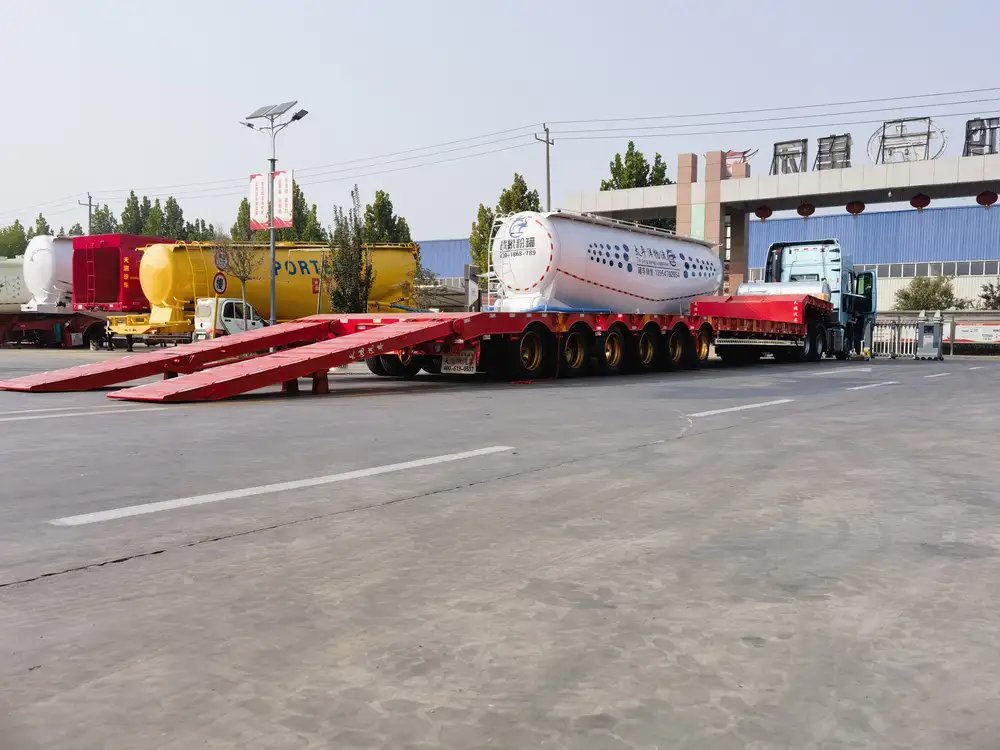
Overload Prevention
Accurate load capacity calculations prevent overloading, which can lead to structural failures and accidents.
- Real-Time Monitoring: Incorporate load sensors to provide continuous feedback on weight distribution.
- Automated Alerts: Notify operators when approaching or exceeding load limits.
Tipping Stability
Ensuring stability during unloading minimizes the risk of accidents and material loss.
- Balanced Weight Distribution: Design the tipper body to maintain a low center of gravity.
- Stabilizing Mechanisms: Implement features like outriggers or stabilizers to enhance tipping stability.
Material Containment
Secure containment systems prevent spillage, protecting the environment and maintaining operational cleanliness.
- Splash Guards: Reduce material erosion and prevent debris from escaping.
- Secure Fastenings: Ensure lids and gates are firmly attached during transportation.
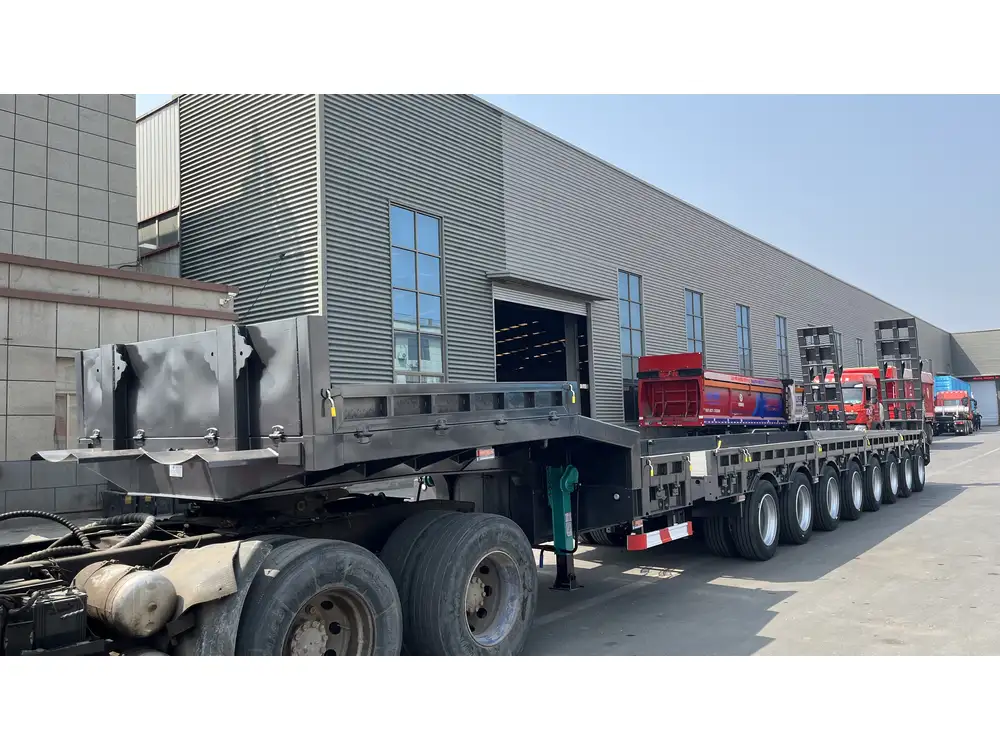
Future Trends: The Evolution of Tipper Body Calculations
As the transportation industry evolves, so do the methods and technologies involved in calculating tipper bodies. Anticipating future trends can help in designing adaptable and forward-compatible solutions.
Integration of AI and Machine Learning
Artificial Intelligence (AI) and Machine Learning (ML) can optimize load calculations by analyzing vast datasets to predict load distributions and identify optimal material handling techniques.
Sustainable Materials
The push towards sustainability encourages the use of eco-friendly materials and manufacturing processes in tipper body construction, reducing environmental impact.
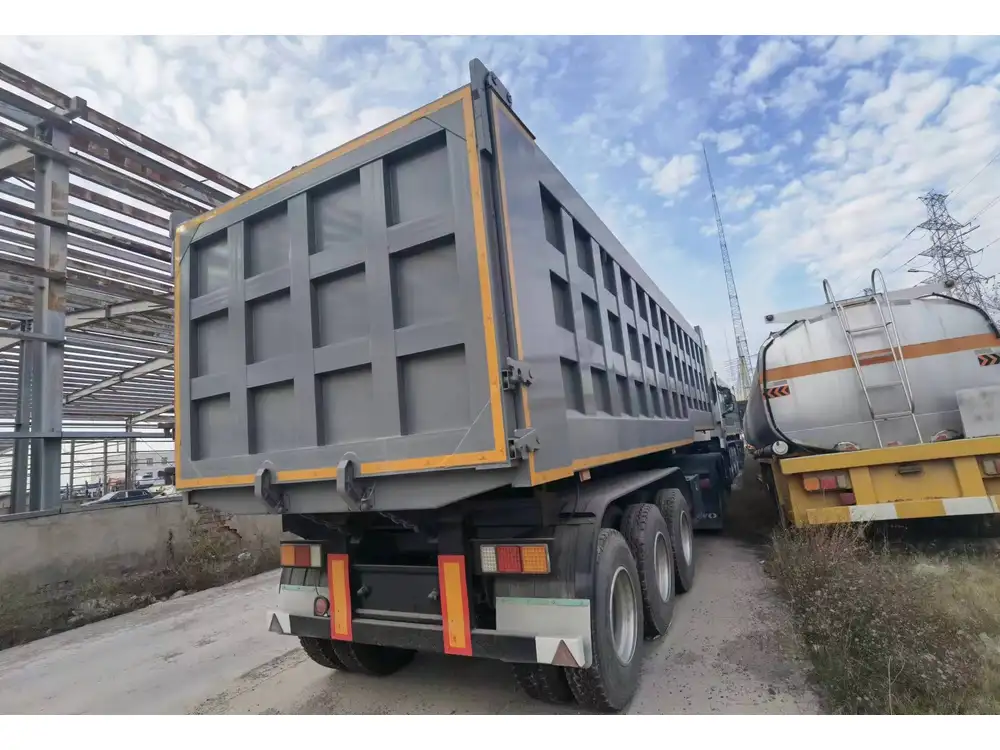
Enhanced Telematics
Advanced telematics systems provide deeper insights into operational efficiency, maintenance needs, and driver behavior, facilitating data-driven decision-making.
Automation and Robotics
Automation in loading and unloading processes increases efficiency and reduces manual labor, with robotic systems handling repetitive tasks with precision.
Conclusion: Precision in Every Calculation with CarMax Vehicle
Calculating the tipper body for semi-trailers is a nuanced process that demands a thorough understanding of material properties, load dynamics, and regulatory standards. At CarMax Vehicle, we combine engineering expertise with innovative design to deliver tipper bodies that not only meet but exceed your operational needs. By meticulously addressing each factor in the calculation process, we ensure that your fleet operates with maximum efficiency, safety, and reliability.
Partner with us to harness the power of precision engineering, and elevate your transportation operations to new heights.
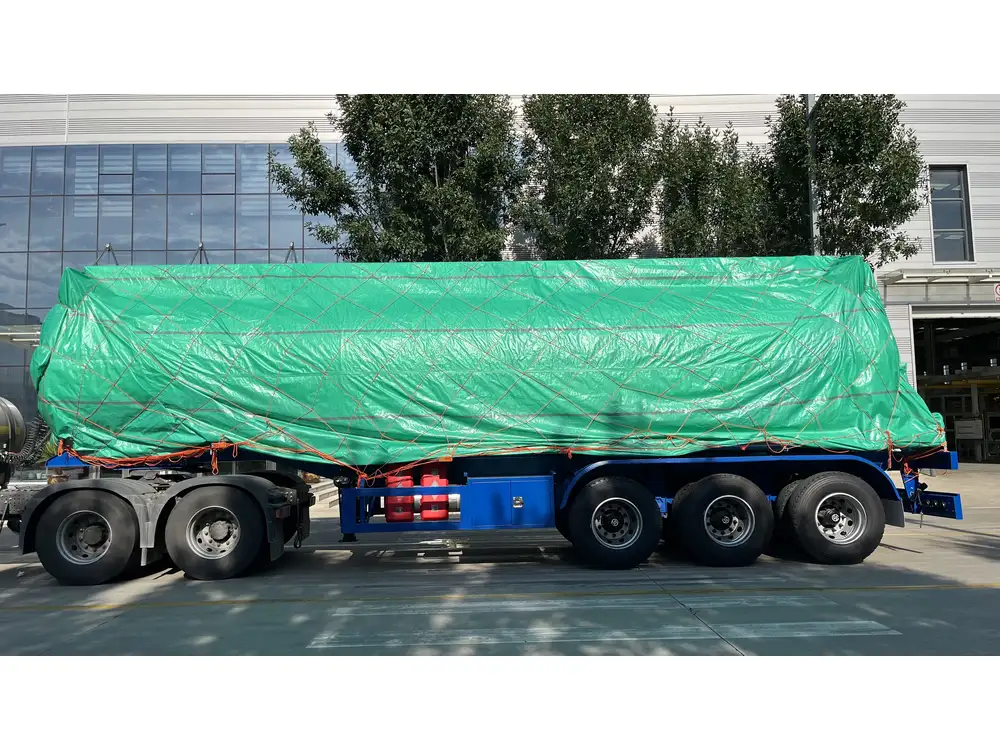
Frequently Asked Questions
1. What is the importance of calculating the tipper body correctly?
Correctly calculating the tipper body ensures optimal load capacity, enhances operational efficiency, maintains safety standards, and prevents legal issues related to overloading or non-compliance with transportation regulations.
2. How often should the tipper body be inspected for maintenance?
Regular inspections should be conducted weekly for hydraulic systems, monthly for structural integrity, after each use for cleaning and coating, and bi-monthly for mechanical components to ensure the tipper body remains in optimal condition.
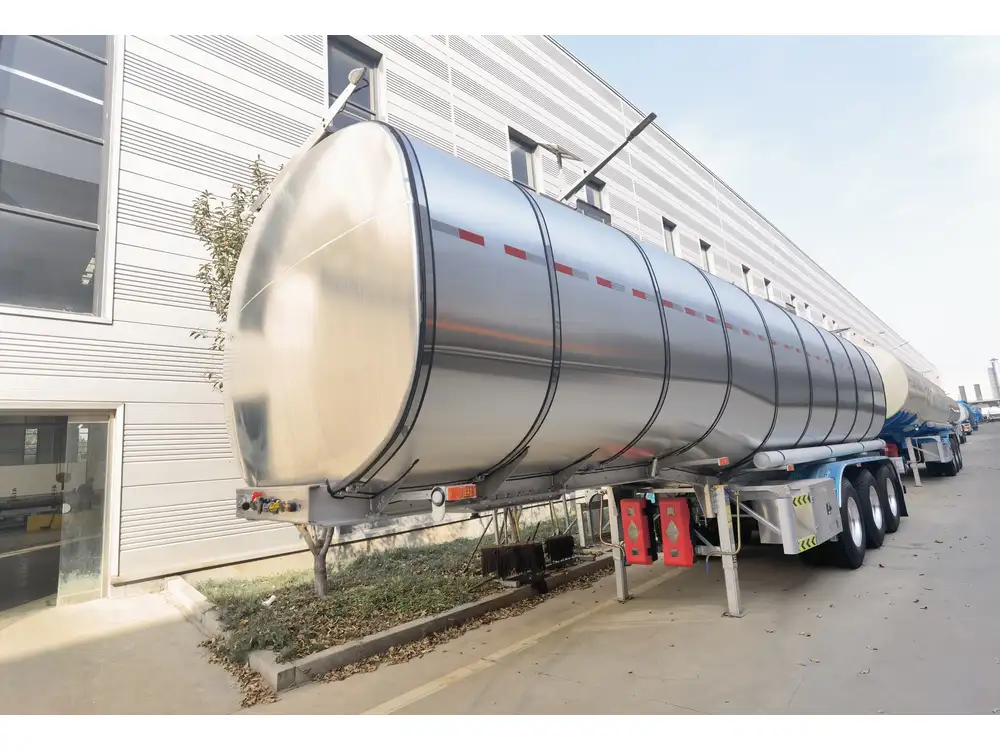
3. Can the tipper body be customized for different types of materials?
Yes, at CarMax Vehicle, we offer customized tipper bodies tailored to handle various materials, ensuring versatility and efficiency in your transportation operations.
4. What materials are best for constructing durable tipper bodies?
High-strength steel, aluminum alloys, and composite materials are excellent choices for constructing durable tipper bodies, offering a balance of strength, weight, and resistance to wear and corrosion.
5. How does telematics enhance the functionality of a tipper body?
Telematics provides real-time monitoring of load status, location, and system performance, enabling predictive maintenance, optimizing load distribution, and enhancing overall operational efficiency.



